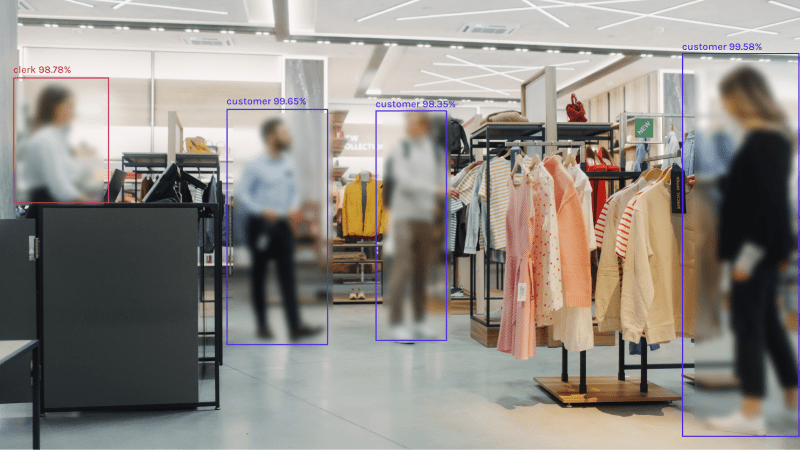7 Security Technologies Used in Web Filtering Software for Schools

Content filtering tool for schools is a high-tech program that incorporates cutting-edge filtering technology with user-friendly management features. This software uses next-gen technologies to create a secure environment for student learning. Read the article to know 7 security technologies used in the best internet filtering software for schools.
#1. URL Filtering
A key element of content-filtering software is URL filtering technology. It enables administrators to restrict and control access to websites based on their URLs. This system operates by matching website URLs to predetermined categories or blacklists.
However, administrators can establish and modify lists of approved or forbidden URLs according to their educational institution abiding by the rules and filtering requirements. It offers a strong technique for preventing access to particular websites or groups of websites that could contain offensive or hazardous content.
#2. Content Categorization
Content filtering software that organizes websites into specified categories based on their content must include proper categorization. This technology uses complex algorithms and databases to assess the content of online pages. It also classifies them into relevant categories like education, social media, gaming, or adult content. The software allows administrators to apply policy-based filtering by permitting or banning access to particular categories by categorizing websites.
#3. Keyword Filtering
An important component of content filtering software is keyword filtering, which helps enforce internet usage guidelines and restricts access to particular information based on predefined terms or phrases. This technique searches online pages, URLs, or search terms for particular keywords connected to unpleasant or improper content.
The software can recognize and filter out content that matches certain keywords by maintaining a database of specified keywords. Administrators can alter the list of keywords included in the policies and particular filtering needs of their school. When it comes to preventing access to hate speech, sexually explicit material, or other potentially harmful materials, keyword filtering is especially successful.
#4. SSL Inspection
A key component of content filtering software that deals with encrypted web traffic is SSL inspection. Traditional filtering techniques can have issues deciphering the material behind encrypted connections as more websites embrace HTTPS encryption. SSL inspection is also known as HTTPS inspection. It decrypts and examines encrypted online traffic to spot potential dangers and successfully implement filtering rules.
Moreover, the program serves as a mediator between the user’s device and the website. It works effectively for intercepting and decrypting encrypted traffic for analysis. The content is then subjected to content filtering and malware detection before being re-encrypted and forwarded to the user’s device.
SSL inspection enables the software to check HTTPS websites for inappropriate content, malware, and other security hazards. As it provides complete filtering and protection for students.
#5. Malware Detection and Prevention
A crucial component of content filtering software that helps in shielding kids and educational institutions from internet hazards is malware identification and prevention. This function uses sophisticated ways to detect and prevent unwanted content, such as websites with malware, phishing scams, and destructive downloads.
Furthermore, the software combines signature-based and behavior-based analysis to detect known malware signatures and spot suspicious patterns or behaviors that point to possible threats.
However, malware detection and prevention in content filtering software is essential to preserve a secure online environment. They also help in protecting sensitive data and stop interruptions created by malware attacks.
#6. Real-time Monitoring and Reporting
Real-time monitoring and reporting is a key component of content filtering software that gives administrators insightful knowledge of students’ internet activity. With the help of this capability, managers can continuously monitor online traffic in order to measure and assess internet consumption in real time.
Furthermore, users can also get additional information through continuous monitoring. For instance, they can know the length of internet sessions, the search phrases used, and the websites viewed. With real-time monitoring, administrators can take rapid action when policy infractions or possible dangers are quickly identified. In addition, it offers insight into new patterns and allows schools to proactively alter their filtering procedures and handle fresh online difficulties.
#7. Mobile Device Management
Mobile device management, or MDM is a crucial element of internet filtering software for schools that improves the control and management of mobile devices in educational institutions. MDM enables administrators to centrally control and enforce filtering regulations on their mobile devices regardless of the student’s location. It offers a variety of features, including application control, policy enforcement, and remote device configuration.
Furthermore, users can remotely set up and configure devices to manage their systems. They can implement content filtering regulations, and prevent access to both websites and applications. It also facilitates users to watch and monitor device activity by enabling administrators to spot any policy infractions and swiftly take corrective action.
In a Nutshell
To establish a safe and secure online learning environment the best internet filtering software for schools use numerous security measures. These solutions efficiently filter and regulate web content, shielding students from improper or hazardous content. They include utilizing URL filtering, content classification, keyword filtering, and SSL inspection. Moreover, for extra protection, it uses malware detection and prevention heal-time monitoring, and mobile device management.





